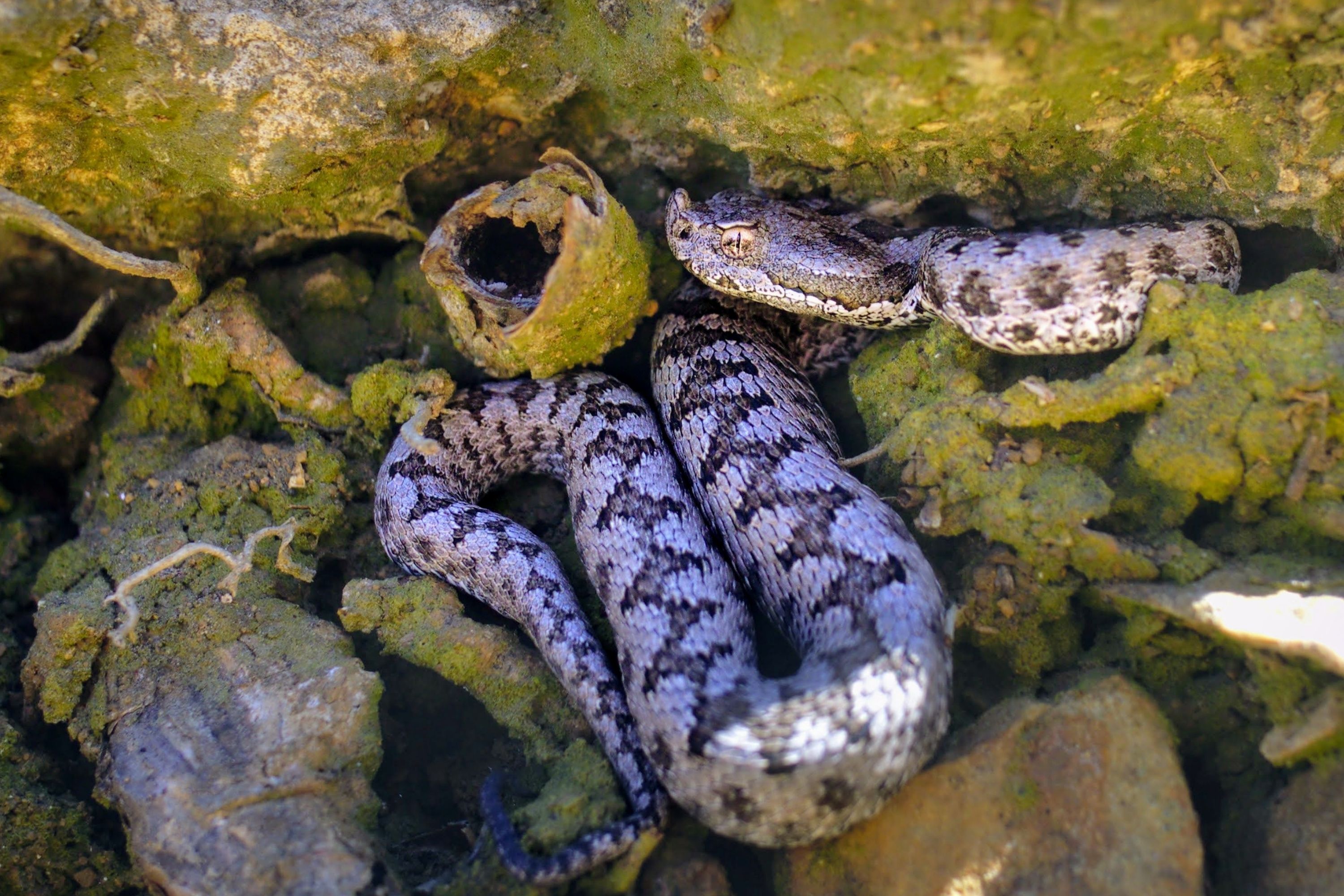Snub-nosed viper
(Vipera latastei)

Description
Vipera latastei is a species of venomous snake in the subfamily Viperinae of the family Viperidae. The species is endemic to the Iberian Peninsula and northwestern Maghreb. Three extant subspecies and one extinct subspecies are currently recognized, including the nominate subspecies described here. The specific name latastei, is in honor of Boscà's French colleague, herpetologist Fernand Lataste,who would a year later return him the honor, by naming after him a discovery of his own, Boscá's newt (Lissotriton boscai). V. latastei grows to a maximum total length (including tail) of about 72 cm (28.3 in), but usually less. It is grey in colour, has a triangular head, a "horn" on the tip of its nose, and a zig-zag pattern on its back. The tip of the tail is yellow. V. latasei can be seen day or night but is usually hidden under rocks. The yellow tip of the tail is possibly used to lure prey. V. latastei is found in southwestern Europe (Portugal and Spain) and northwestern Africa (the Mediterranean region of Morocco, Algeria and Tunisia). It is possibly extinct in Tunisia. The type locality given is "Ciudad Real", emended to "Valencia, Spanien" (Valencia, Spain) by Mertens and L. Müller (1928). V. latastei is found in generally moist, rocky areas, in dry scrubland and woodland, hedgerows, stone walls, and sometimes in coastal dunes. The species V. latastei was classified as Near Threatened (NT) according to the IUCN Red List of Threatened Species (v3.1, 2001), and from 2008 is recognised as Vulnerable (VU). It is listed as such because it is probably in significant decline (but likely at a rate of less than 30% over ten years) due to widespread habitat loss and persecution throughout much of its range, thus making the species close to qualifying for Vulnerable. Further population reduction is expected, but is not likely to exceed 30% over the next 10 years, but localized extinctions in parts of its range are possible (e.g., Tunisia, Spain). Vipera commonly known as the palaearctic vipers and Eurasian vipers is a genus of venomous vipers. It has a very wide range, being found from North Africa to just within the Arctic Circle and from Great Britain to Pacific Asia. The Latin name vīpera is possibly derived from the Latin words vivus and pario, meaning "alive" and "bear" or "bring forth"; likely a reference to the fact that most vipers bear live young. Currently, 21 species are recognized.
Taxonomic tree:







